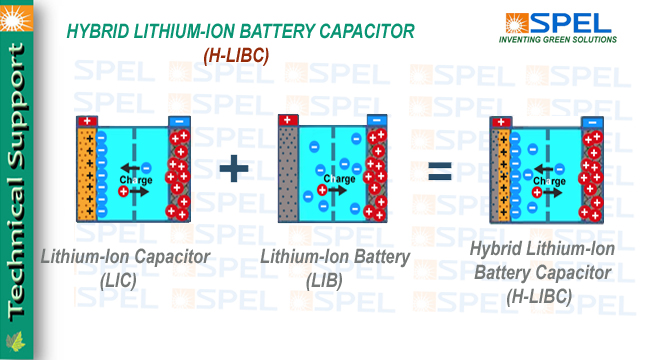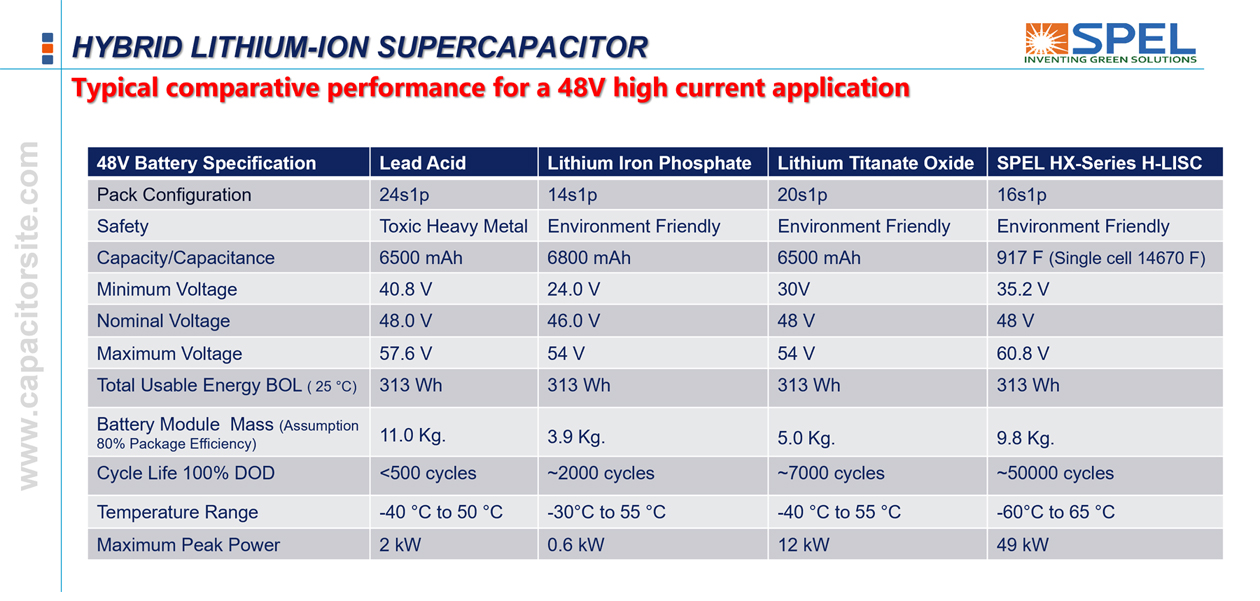

Lithium-ion Battery Capacitor overview
Hybrid/Composite positive Electrode of H-LIBC is responsible for increase in storage capacity and further controlled Pre-doping of negative electrode with lithium ions reduces the electrical potential of negative electrode which results in higher output differential potentional of 3.8 Volts in LIC, and this combination results in further increase in energy density.
SPEL Hybrid Li-ion Supercapacitors are available with Energy Density up to 65Wh per Kg.
Typical Power Density of SPEL Hybrid Lithium-ion Battery Capacitor is : 4 to 6.5kW per kg depending on percentage of hybridization.Unlike Lithium-Ion Batteries H-LIBC's power management system is very much simplified. LICs single cell voltage range is 2.2 Volts to 3.8 Volts, so in case of H-LIBCs Voltage needs to be monitered for limiting the minimum and maximum limits. Even the charger for H-LIBCs are simplified and cost effective.
Hybrid Lithium-Ion Battery Capacitors (H-LIBC) are comparitively safer than batteries. In case of abuse like tests like Overcharge, External Short circuit, Nail penetration, and Crushing, it is observed that the high specific surface area of H-LIBCs electrode enhances the thermal and chemical stability with reduced thermal runaway and fire effect. Therefore, Lithium-ion Battery capacitor is very less flammable as compared to batteries.
H-LIBC is a promising electrochemical energy storage device for applications in Electric Mobility and other demanding applications of High-Current, medium Energy-Density with Fast-Charging and Saftey.Yes
As the useable energy density of Hybrid Lithium-ion Battery Capacitor exceeds that of flooded Lead Acid Battery, and can be directly
compared with Lithium Titanium Oxide (LTO) Batteries. H-LIBC can potentially
replace some of critical applications where saftey, fast charging, higher cycle life is desired.
Below is the typical comparative chart.

Comparative performance of H-LIBC with other popular Lithium-Ion batteries